Fascinating Facts about Crete: Basic, Historical and Cultural Information
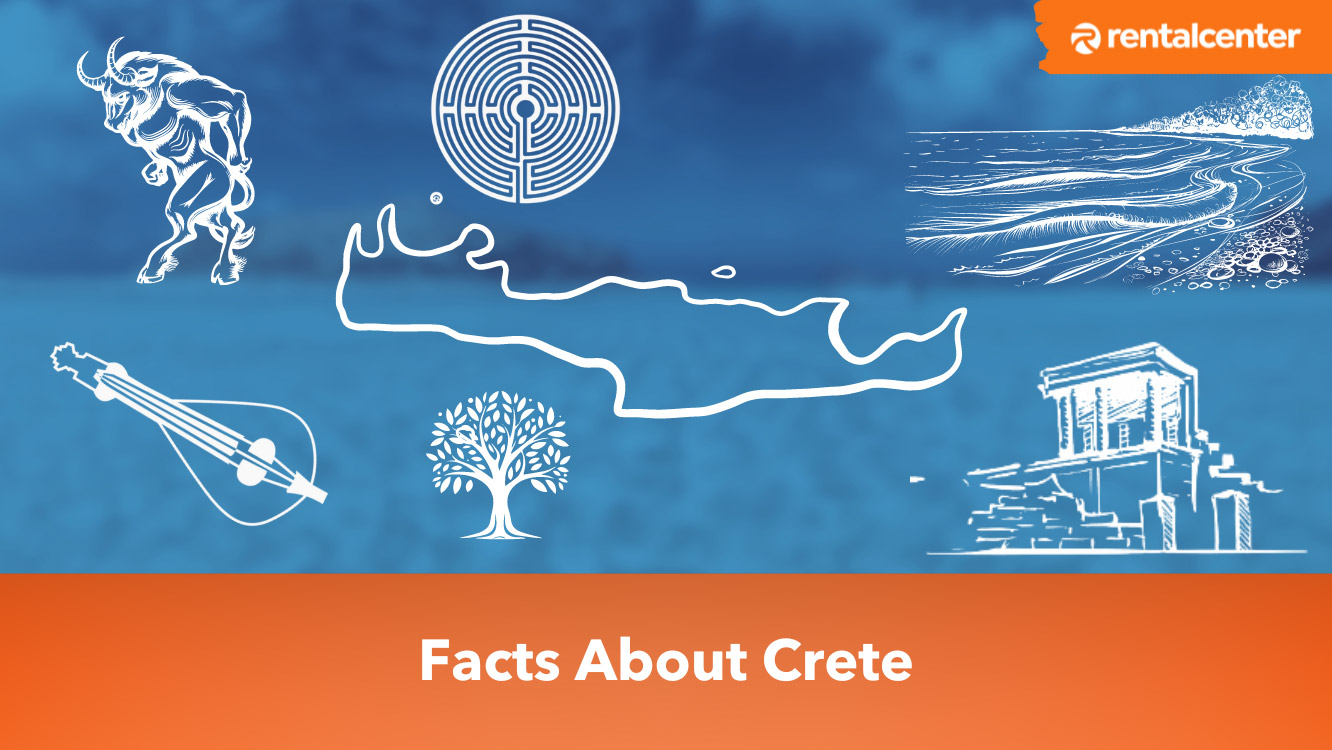
If you’re a traveler by soul and Crete is one of the many countries on your bucket list, then you’re in for a huge treat. The island is among the best places to visit in the world, and you’re certainly going to love it. So whether you’re a solo traveler, a couple on your honeymoon, or with your family, Crete is a place you should all visit.
Crete is not a country. It is the largest and most populous island in Greece. Crete is one of the 13 administrative regions of Greece and plays a significant role in Greek history, culture, and tourism, but it is governed by the national government of Greece, not an independent nation.
Crete is located in the eastern Mediterranean Sea, 160 km south of mainland Greece. It is the southernmost major Greek island, positioned between the Aegean Sea to the north and the Libyan Sea to the south. Crete is in Greece, and lies west of Cyprus and north of Libya and Egypt.
Although Crete is listed as the most famous tourist destination in Europe, many people are still unaware of its history and heritage. From its beautiful beaches offering a picturesque view to its breathtaking monuments and architecture, Crete clearly has everything that you could ever want for a holiday getaway.
Basic Facts About Crete
The island of Crete is a place where several civilizations have flourished over the centuries. This makes it an excellent destination for those who love history and appreciate ancient cultures, as there’s so much to see and learn about. If you’ve been planning a trip to Crete, here are some surprising facts that will undoubtedly make you want to visit the island more.
1. Crete is Bigger Than You Thought
In terms of size, Crete is considered to be the largest island in Greece. It is the 5th biggest in the Mediterranean and the 88th largest island in the world.
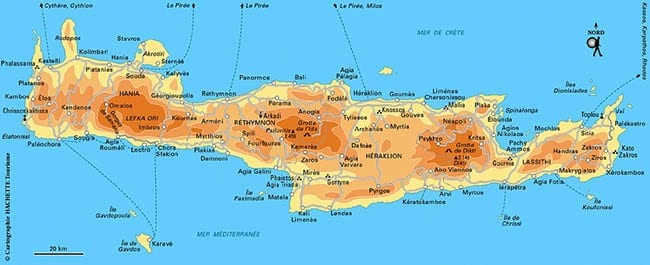
The island is quite long, measuring 260 kilometers long (161 miles) and ranging in width from 60 kilometers at its widest point (37 miles) to 11 kilometers at its narrowest point (7 miles). The island encompasses an area of about 8300 square kilometers (5157 miles).
In addition, the island of Crete also has the most number of people in Greece, with more than 600,000 inhabitants.
2. Seasons and Weather in Crete
Summer in Crete (June-August) is hot, while the winter months (December-February) are cold and wet. The spring and autumn seasons are usually milder in nature.
During summer, temperatures range between 20 degrees Celsius to 30 degrees Celsius (70 degrees Fahrenheit to 90 degrees Fahrenheit), with an average humidity of 70%. However, during winter, the average humidity is around 60%, and the temperature may drop down to 10 degrees Celsius (50-60 degrees Fahrenheit).
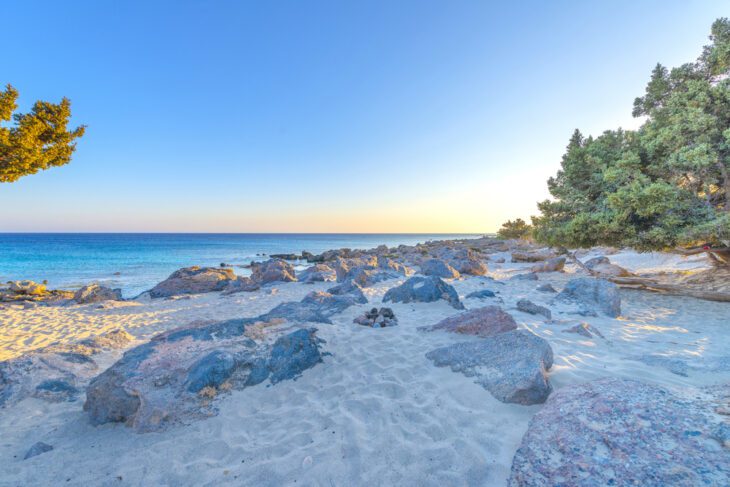
In addition, the island of Crete enjoys not only one but two climates, making it one of the most favored Greek Islands. The northern coast of Crete has a Mediterranean climate, while southern Crete has a North African climate.
3. It Snows in Crete
As mentioned above, Crete has winter, which means it sometimes snows on certain parts of the island. Therefore, you can expect to see some snow in Chania’s White Mountains. In addition, the Psiloritis in Rethymno and the Dikti mountain range in Lasithi also experience snow.
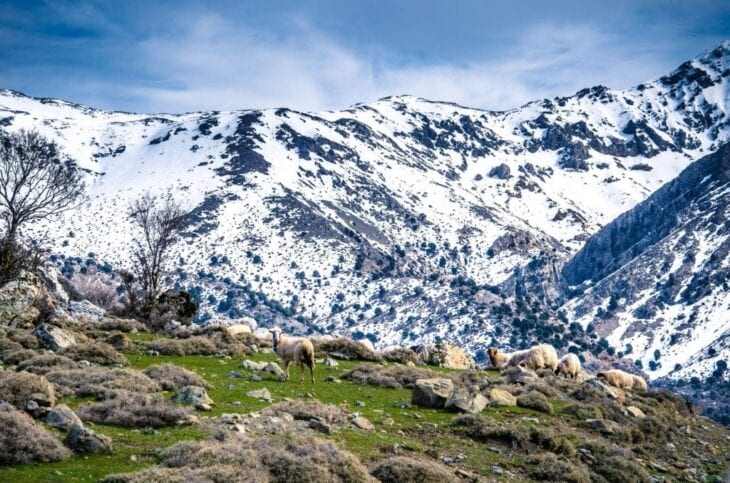
4. The Oldest City in Europe is Found in Crete
The ancient Minoan palace of Knossos, located south of Heraklion, is one of the many highlights of Crete. The city was inhabited for the first time during the Neolithic age (7000 BC)
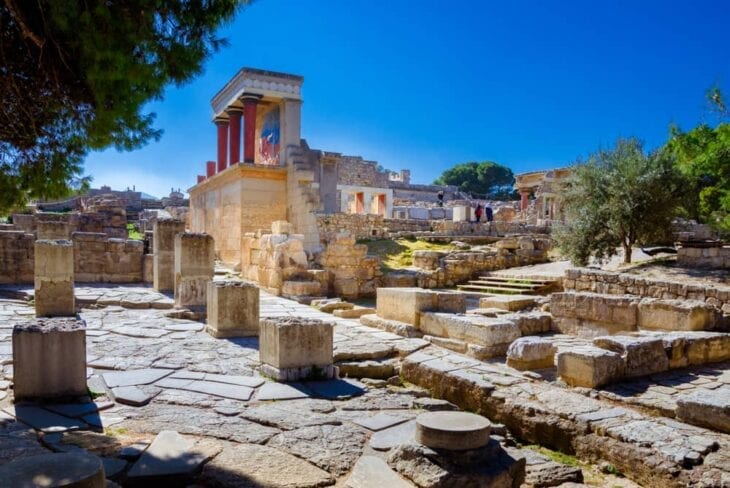
Knossos was later re-built by the Minoans, who were considered the first great civilization of Europe. It was during this time that Knossos became wealthy and influential enough to be called a city. The ruins of Knossos are among the few relics remaining from the old world of Crete. Today, many historians consider Knossos to be one of the oldest cities in Europe.
Sir Arthur Evans, an archaeologist, rediscovered the city and started excavations during the early 1900s.
5. Crete Has Many Neighbouring Islands
Off Crete’s Aegean and Libyan coasts, you can see many small islands. Some of these remain isolated while others are accessible by boat.
Some of these islands include Elafonisi, Gavdos, Chrissi and Paximadia, all found in the south, while there’s Gournia and Palea in the west. In the east is Agioi Theodori, while in the south-east, you can discover Dia.
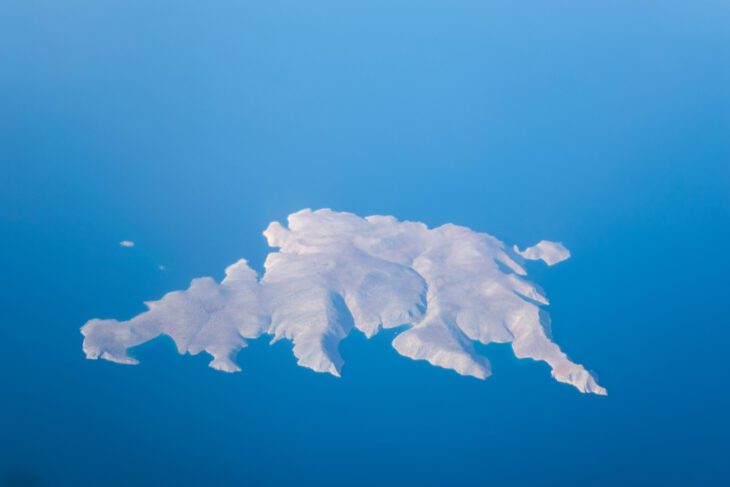
6. Crete is Awarded With the Blue Flag
The island of Crete has many beaches that have been awarded Blue Flags due to their clear waters and cleanliness.
Some of these include Elafonisi (in Chania), Kalyves and Loutro, Damnoni, Gramvousa, Agia Pelagia, Karidi beach (all found in Chania) as well as Balos and Pachia Ammos (in Sitia).
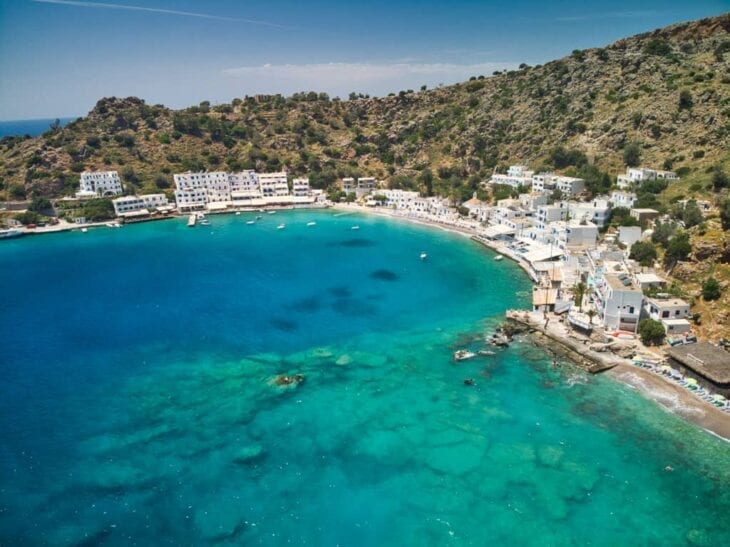
The blue flag award is given to beaches that meet tourism, environmental, and safety standards.
7. Origin of The Name “Crete”
The first mention of the island appears in Syrian literature from the eighteenth century BC, where it was called Kaptara. Crete was referred to as Capthor in both Assyrian archives and the Bible.
To the Egyptians, the island was called Keftiu, while to the Hittites it was Katapa. Other names given to Crete include Prettanike or Brettaniai, which means ‘the land of men.’
The current name, Crete, is attributed to King Kouretes, who was known as Kritas. Another theory holds that the name was derived from Crete, the daughter of one of the Kouretes, who later married Ammon Zeus, who arrived from Libya and created a new empire.
8. The Language of Crete
Crete’s official language is Greek.The local Cretan dialect of Greek is spoken not just in the island but also all around the world by the Cretan diaspora in countries such as Australia, the United States, Germany, and several Cretan Turks.
Many people in Crete speak English, so you won’t have any language problems while visiting the island.
9. Cretan Turks
Following the defeat of the Ottoman Empire in The Balkan War, Crete was given to Greece. Unfortunately, this meant that many Turkish inhabitants of Crete found themselves under Hellenic rule. As a result, soon after the turn of the 20th century, around 5,000-10,000 Turkish speakers left the island for Turkey while only some stayed back.
Today, there are thousands of people in Crete who have Turkish origins. These people are often referred to as “Cretan Turks” as well as those who have migrated to Turkey and other places such as the Dodecanese in Syria, Israel, Lebanon, and Egypt.
Historical and Cultural Facts of Crete
Although there are basic facts about Crete that everyone should know, there are many interesting facts about the island’s history and culture worth mentioning. You’ll understand Crete and its people better after checking out the listed information:
10. Crete is Known to Be the Birthplace of Zeus
Zeus, one of the most powerful Greek gods and ruler of Olympus, was said to have been born in Dicteon cave located in Crete. Many ancient writers, including Homer, wrote about this mythical birth.
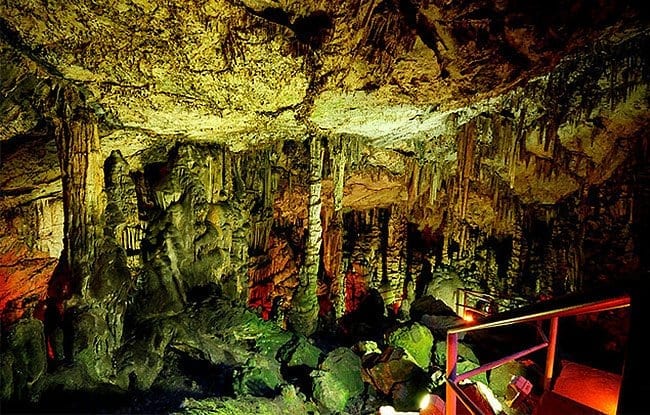
The god Hermes brought baby Zeus from his birthplace in Crete to Gortyn to be raised by nymphs who disguised him as a goat so that his father Kronos wouldn’t eat him because he had been told that one of his children would overthrow him just he had overthrown his own father, Uranus.
The cave is open to the public and many people visit it from around the world.
11. The Oldest Olive Trees in The World
For centuries, olives have thrived on the island of Crete. The trees can live for hundreds of years and can easily survive harsh weather conditions like heavy snow during the winter months.
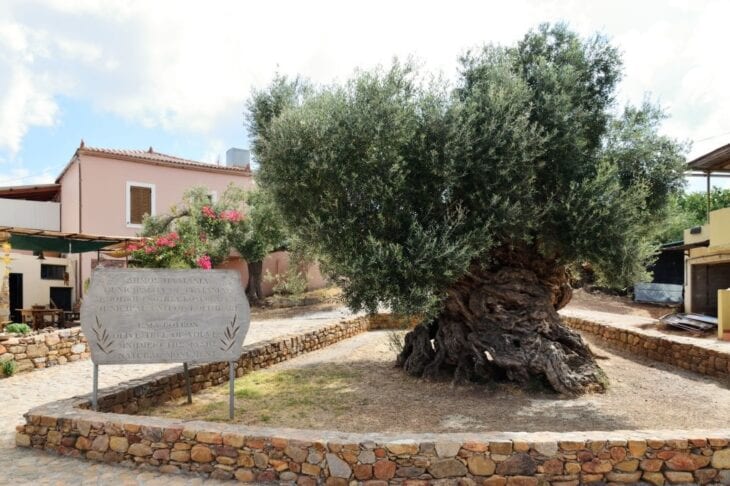
Two of the oldest olive trees on the planet are still alive and can be seen in Crete. The first tree is in Vouves village, Chania. The other tree (possibly the oldest of the two) is in Kavousi village, Lasithi region.
The trees are open to the public, and you can see them yourself.
12. It All Started in Crete
Many people believe that Crete is the birthplace of European Civilization. However, the island’s history can be dated back to the Neolithic Age, around 7000 BC.
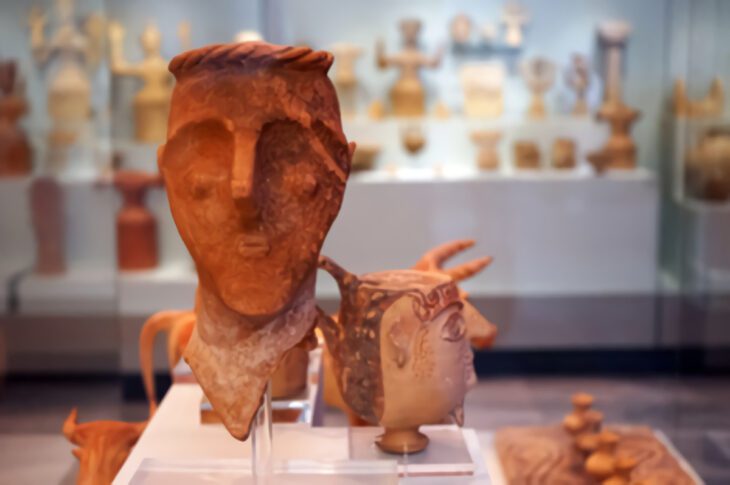
The island housed flourishing civilizations in Minoan Crete, Ancient Greece, and the Roman Empire. Although it is hard to say when Crete’s history started because there are many controversies in this area of study, archeologists had discovered that Crete was inhabited way before 7000 BC by the peoples who were primarily hunters and gatherers.
13. Crete Wasn’t Always Considered Part of Greece
Among the most surprising facts about Crete is that it was not always considered part of Greece until December 1913, when the Greek state annexed it after a brutal and bloody revolution.
Until then, Crete was part of the Ottoman Empire, and it controlled 15% of Greece’s territory. Even though the island was still considered part of Greece, it actually became an autonomous state within the Empire in 1898 due to several attempts for autonomy from the Cretans themselves.
Crete is an international holiday destination offering great beaches, fantastic food, and even better nightlife that has only been around for less than 100 years. But for centuries before that, Crete was under foreign occupation.
14. Different Variety of Fruits Can Be Seen in Crete
Although Crete is well known for olives, many other varieties of fruits can be seen on the island. There is a wide variety of plums, grapes, figs, oranges, and lemons which are often used to make raki, a traditional alcoholic drink that many people love.

Other fruits you can find in the island are cherries, strawberries, watermelons, melons, apples, pears, apricots, dates, pomegranates, and even bananas.
15. Amazing Cretan Musical Instruments
Many different musical instruments originated from Crete. Among the most famous traditional musical instruments found on the island are the lyra, laouto, and violin.
The current modern-day lyre has its roots in Ancient Greece, where it was used to accompany poetry recitals. The instrument that we know today is similar to modern-day harps but made out of wood and with a broader base.

On the other hand, the laouto is a stringed instrument that looks like a modern-day lute. It’s played with both hands, and many different sizes for this instrument exist.
Italian luthiers first invented the violin during the Renaissance period. However, Crete also had its own version of this musical instrument. The difference between the two was that Cretan music, for the most part, used 3 strings instead of 4 as it does on a modern-day violin.
16. Mesmerizing Animals Found in Crete
Crete is home for many different animals, and many of these can only be found on the island.
Among the most popular animals in Crete is the very gentle and sweet-pea Cretan goat which has a long history of being a part of daily life on Crete. It was an important animal for locals because it provided them with meat, milk, cheese, wool, and even transportation through its excellent climbing abilities.
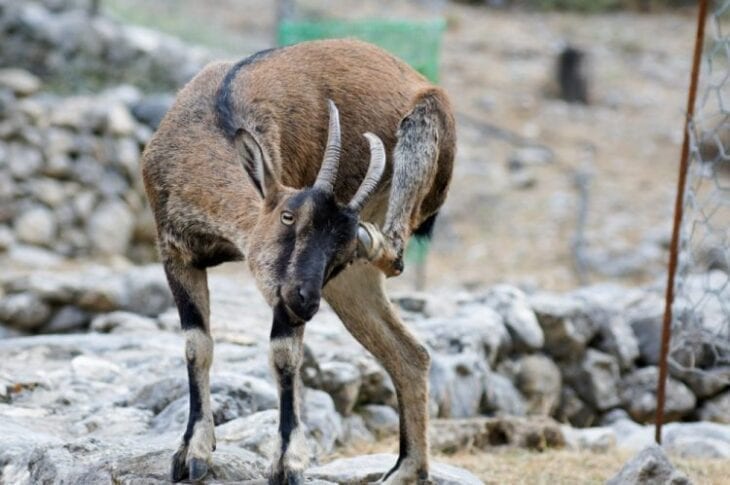
The Island is also home to the Cretan wild cat, a very rare and unique breed of feline that is one of the world’s most endangered feral cats.
Cretan shrews are another unique species of animal found on the island. It is the smallest mammal known to man.
During the prehistoric era, Crete also had their own species of elephants which were called dwarf elephants. These elephants were considered mini mammoths since they were found to be a part of the Mammoth family.
17. An Island Known For Its Palm Trees
The magnificent palm tree forest in Sitia’s Vai Beach is Europe’s largest and most significant palm forest. The palm type is the Phoenix Theophrasti, often known as the Cretan date palm.
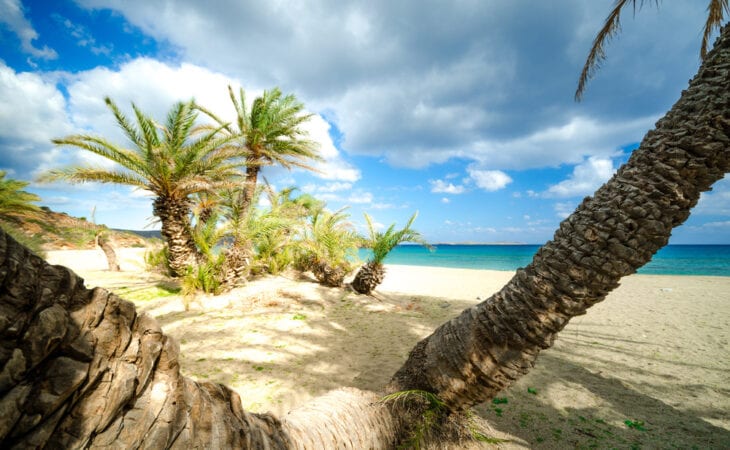
Greece has four palm tree forests, three of which are on the island of Crete. Aside from Vai, the others are found in Preveli, which is in south Rethymno, and Agios Nikitas on Heraklion’s southern shore.
18. Cretans Certainly Love Guns
It’s quite a known fact that Crete has the highest gun ownership in Europe. It is evident that the majority of Cretans own a gun and enjoy shooting. However, despite this fondness of firearms, Crete is a safe place to live in, and the crime rate here is among the lowest in Europe.
19. Lavish Cretan Wines
The island is home to around 13 distinct native grape types, the most well-known of which are Vidiano and Vilana, two white grapes. These grapes are often used to create Cretan wines.
Vilana grape is usually used to create white wine, while Vidiano grapes are blended with others to produce red wine. However, the most famous of all Crete wines is Commandaria, known as the ‘Drink of Kings and the King of Drinks‘.
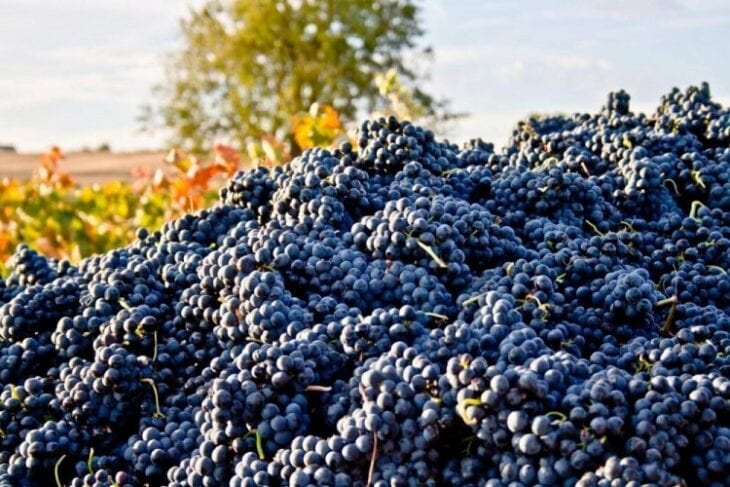
What is the most historical information you may not know about Crete?
Crete is a place full of interesting facts, both ancient and modern. With its long history, unique culture, and fascinating traditions, Crete remains one of the most visited islands in Greece. Many stories about the place remain hidden behind its long past but luckily, these listed facts about Crete have helped us understand the fascinating island even more.
Useful historical information you may not know about the island of Crete:
- The island is first mentioned as Kaptara. The name Crete appears in Homer’s Odyssey.
- It is considered the oldest inhabited place in Europe.
- The Lassithi Plateau is the largest flat area of Crete (altitude 850 metres).
- Crete is 260 km long and 60 km wide; 12 km is the narrowest point.
- Crete has over 200 gorges.The Samaria Gorge is one of the largest in Europe.
- There are more than 5000 recorded caves.
- Gourgouthuka in the White Mountains is the deepest cave in Greece, 1208 m, 44th in the world. In the whole world there are only 84 caves deeper than 1000 m.
- Most rivers have water only after a heavy rain.
- The coastline of Crete is 1046 km long.
- The sea water is so clear that you can see up to 40 meters deep.
- In 365 BC a devastating earthquake raised the western part of Crete up to 9 meters.
- There are 34 islands around Crete (larger than 100 acres).
- The highest mountain is Psiloritis 2456 metres.
- Snow is common on the big mountains from November till May.
- Every 1,000 years Crete grows 1 cm from the Sahara dust brought by the south winds.
- In southern Crete, swallows remain all year round.
- Crete’s distance from Africa is almost the same as from Europe.
- There are over 1750 species of plants, 160 of which are endemic.
- There are over 30 million olive trees.
Interesting facts about the Minotaur
The Minotaur is a mythical creature from Greek mythology, with the head of a bull and the body of a man. It was confined in the labyrinth (Minoan Maze) built by Daedalus for King Minos of Crete and symbolizes fear in many interpretations.
Find the most interesting facts about the Minotaur below.
- Unique Hybrid Appearance. The Minotaur, a creature from Greek mythology, had the head of a bull and the body of a man. Minotaur symbolized the unnatural union between human and beast and was confined in the labyrinth built by Daedalus for King Minos of Crete.
- Royal Parentage. The Minotaur was born from Queen Pasiphae of Crete and a bull sent by Poseidon. King Minos angered the god by not sacrificing the bull as promised, leading to the Minotaur’s creation as divine punishment.
- The Labyrinth. The Minotaur resided in the Labyrinth, a complex maze built by Daedalus for King Minos. The maze was designed to trap both the Minotaur and its victims, making escape nearly impossible.
- Human Sacrifices. The Minotaur resided in the Labyrinth, a complex maze designed by Daedalus for King Minos. The maze was built to trap both the Minotaur and its victims, making escape nearly impossible.
- Theseus and the Minotaur. The most famous Minotaur story is Theseus’ victory over the creature. Theseus, an Athenian hero, volunteered as a sacrifice to enter the Labyrinth and successfully killed the Minotaur, ending the tribute from Athens to Crete.
Interesting facts about Zeus
Zeus is the supreme god in Greek mythology, ruling Mount Olympus as the god of the sky, lightning, thunder, law, and justice. He led a rebellion against Cronus to become the ruler of the gods and fathered many divine and heroic children. In Roman mythology, Zeus is known as Jupiter.
Find the most interesting facts about the Zeus below.
- Zeus was the king of the Greek gods and ruler of Mount Olympus. He held authority over all other gods and goddesses, presiding over the divine council and making decisions that affected both gods and mortals.
- Zeus was the god of the sky, lightning, thunder, law, order and justice. He controlled weather phenomena and settled disputes among gods and mortals, acting as the ultimate arbiter of justice.
- Zeus had a complex family history involving the overthrow of his father. Zeus overthrew his father, Cronus, who had swallowed his children to prevent being overthrown. Rhea saved Zeus by tricking Cronus, allowing Zeus to grow up and challenge his father, leading to his rise as king of the gods.
- Zeus the Olympian gods in a ten-year war against the Titans. Zeus led the Olympian gods in a ten-year war against the Titans, known as the Titanomachy. After freeing his siblings from Cronus, Zeus and his allies emerged victorious, establishing the Olympians as the ruling gods.
- Zeus was known for his many love affairs and many children, despite being married to Hera. His relationships with goddesses, nymphs, and mortals resulted in numerous children, including famous figures like Athena, Apollo, and Hermes.
Interesting facts about Hercules
Hercules, also known as Heracles, was a legendary hero and demigod in Greek mythology. As the son of Zeus and the mortal Alcmene, he is best known for completing the Twelve Labors and symbolizing strength and bravery. After his death, he was granted immortality and became a full god.
Find the most interesting facts about the Zeus below.
- Hercules was a demigod, born to Zeus and a mortal woman. Hercules, known as Heracles in Greek mythology, was a demigod born to Zeus and a mortal woman, Alcmene. His divine parentage granted him extraordinary strength, but it also caused Hera’s jealousy, leading to many of his trials.
- Hercules completed the Twelve Labors as penance for killing his family in a fit of madness caused by Hera. These tasks, including slaying the Nemean Lion and capturing Cerberus, demonstrated his strength and perseverance.
- Hercules’ Strength Displayed from Infancy. Hercules showed incredible strength even as a baby. When Hera sent two serpents to kill him, the infant Hercules strangled them with his bare hands, proving his superhuman abilities early on.
- Hercules had multiple marriages and relationships. His first wife was Megara, whom he tragically killed during a fit of madness. He later married Deianira, Omphale, and Hebe, the goddess of youth, after becoming a god.
- Hercules Immortalized as a Constellation. After his death, Hercules was honored as a constellation in the night sky. This celestial tribute commemorated his heroic deeds and ensured his legacy in Greek mythology.
Where is Crete?
Crete is situated in the southern Aegean Sea, about 160 km (100 miles) south of the Greek mainland. It is the largest and most populous Greek island, as well as the fifth largest in the Mediterranean. It is surrounded by the Sea of Crete to the north, the Libyan Sea to the south, the Myrtoan Sea to the west, and the Karpathian Sea to the east. Crete lies at the crossroads of Europe, Africa, and Asia
How large is Crete?
Crete covers 8,336 square kilometers (3,219 square miles), making it larger than most Greek islands. The island stretches 260 kilometers (161 miles) from east to west and has a coastline of 1,046 km (650 miles). Its width varies, with the widest point being 60 kilometers (37 miles) and the narrowest point near Ierapetra at 12 kilometers (7.5 miles). Crete has a coastline of 1,046 kilometers (650 miles), providing numerous beaches and coastal features. Mount Ida, the highest point on Crete, reaches 2,456 meters (8,058 feet) above sea level.
How long is Crete?
Crete is 260 kilometers (160 miles) long from east to west. Its width varies significantly, reaching a maximum of 60 kilometers (37 miles) and narrowing to 12 kilometers (7.5 miles) near Ierapetra. Crete has a coastline stretching about 1,046 kilometers (650 miles) and covers a total area of 8,336 square kilometers (3,219 square miles), making it the fifth largest island in the Mediterranean.
What is the population of Crete?
The population of Crete is approximately 624,408 as of 2021, according to the official census data from the Hellenic Statistical Authority. Crete’s population increased by 1,343 people between 2011 and 2021. Crete has 308,608 men and 315,800 women and is divided into four regional units: Heraklion has 305,017 people, Lasithi 77,819, Rethymno 84,866, and Chania 156,706.
Is Crete a Country?
No, Crete is not a country. Crete is part of Greece, not an independent country. It is the largest Greek island and the fifth largest in the Mediterranean. Crete is one of 13 administrative regions of Greece and is divided into four regional units: Chania, Rethymno, Heraklion, and Lasithi. Its regional government is led by a governor, but the island remains under Greek sovereignty. The administrative capital of Crete is Heraklion. As part of Greece Crete uses the Euro, and Greek is the official language. Crete has been part of modern Greece since 1913, after a history of independence and foreign rule.
When was Crete discovered?
Crete was not “discovered” in the traditional sense, as it has been inhabited since at least 130,000 years ago, during the Paleolithic era, based on stone tools found in 2008-2009. This discovery pushed back the earliest known sea crossing in the Mediterranean, previously thought to have occurred around 12,000 BCE. Permanent settlement likely began in the Neolithic period, around 7000 BCE, with settlers from Anatolia. Early settlements include Malia (6000 BCE) and Phaistos (3600 BCE). The Minoan civilization, Crete’s most famous, peaked between 2200-1500 BCE.
Crete FAQs❓
Find the most Frequently Asked Questions about Crete below.
1. How do i get to Crete?
To reach Crete, you can fly or take a ferry. Crete’s main airports are Heraklion (HER) and Chania (CHQ), with Sitia Airport handling local flights. Flights from Athens take about 55 minutes, and many European cities offer direct flights to Heraklion in summer. For sea travel, major ports like Heraklion and Souda (near Chania) operate ferries from Piraeus (Athens) and to other Greek islands. Overnight ferries from Piraeus to Heraklion and Chania take around 9 hours, with faster options reducing travel time to 4.5 hours.
2. How many airports does Crete have?
Crete has three airports: Heraklion International Airport (HER), the largest and busiest; Chania International Airport (CHQ), the second largest; and Sitia Airport (JSH), which mainly serves domestic flights. Heraklion and Chania airports offer international flights, while Sitia focuses on domestic routes within Greece.
3. What are the most surreal places to visit in Crete?
Find below the most surreal places to visit in Crete.
- Balos Lagoon. Balos Lagoon on Crete offers a surreal factor with its turquoise shallows merging into deep azure waters, contrasted by white sands tinged with pink coral accents. This unique blend of colors creates a lagoon that feels almost otherworldly and highlights Balos as a must-see attraction.
- Samaria Gorge. Samaria Gorge, a surreal Crete attraction and UNESCO Biosphere Reserve, is Europe’s longest gorge. The gorge offers an immersive experience through towering pine and cypress trees and narrow, dramatic trails, culminating in the seaside village of Agia Roumeli. This ancient route feels both timeless and magical.
- Kalypso Beach. Kalypso Beach brings surreal charm to Crete with its crystal-clear azure waters set against jagged cliffs. This hidden attraction is perfect for snorkeling and diving, thanks to its exceptional underwater visibility, while the surrounding cliffs amplify a sense of mystery and seclusion.
- The Palace of Knossos. The Palace of Knossos, a surreal and iconic Crete attraction, represents the heart of the ancient Minoan civilization. Known as Europe’s oldest city, this archaeological site with its labyrinthine ruins and vibrant frescoes transports visitors back to an ancient world, echoing the myths of labyrinths and legendary kings.
- Spinalonga Island. Spinalonga Island, a hauntingly surreal Crete destination, encapsulates Venetian, Ottoman, and Greek influences. Once a leper colony, it now stands as a testament to resilience, surrounded by turquoise waters that contrast its historic stone walls, making it an evocative site of layered history.
- Koufonisi Island. Koufonisi Island adds a surreal factor to Crete with its untouched, pristine beaches and ancient ruins. Designated a Natura 2000 site, the island holds remnants of ancient temples and theaters, preserving an ancient mystery within its natural beauty, making it a unique attraction for those seeking solitude.
- Sarakina Gorge. Sarakina Gorge, a hidden gem on Crete, offers a surreal atmosphere with its narrow 1.5-kilometer (0,93 miles) path framed by walls reaching up to 150 meters (492 feet). This gorge, filled with year-round waterfalls and secluded pools, creates an ethereal, oasis-like setting that feels detached from the modern world.
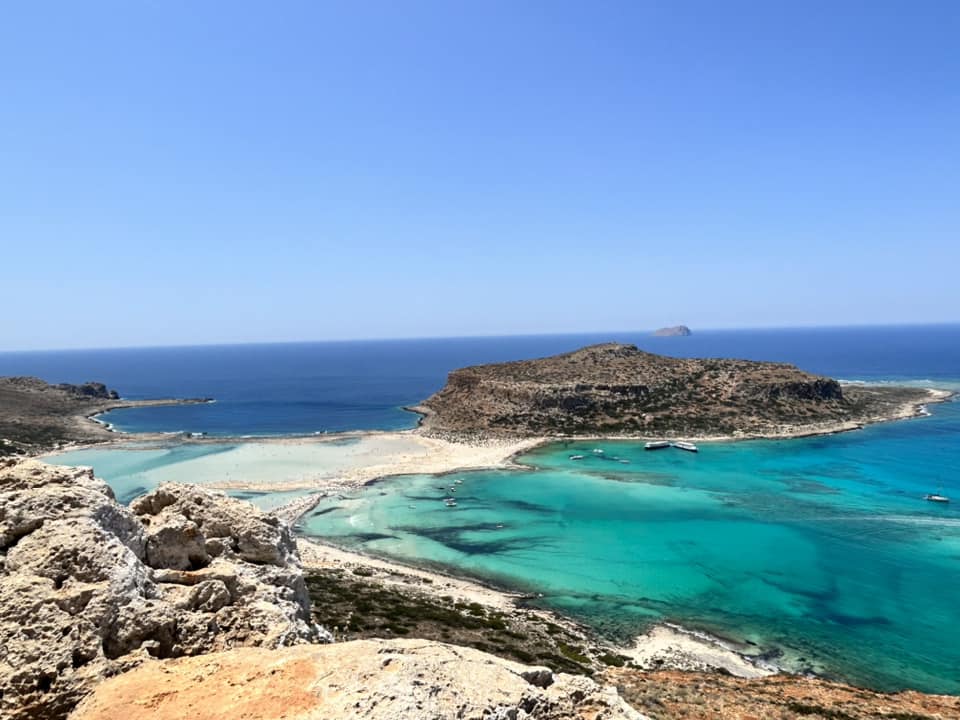
4. What are the most beautiful beaches to visit in Crete?
Crete’s beaches showcase diverse natural beauty and unique features. Balos Lagoon, with its turquoise waters and white sand, is a picturesque lagoon near Chania that gained fame after a visit from Prince Charles and Princess Diana. Elafonisi Beach, also near Chania, is renowned for its pink-tinted sand and shallow, family-friendly waters that create an island-like appearance during low tide. Preveli Beach offers a unique landscape with a palm forest, a freshwater river, and a natural lagoon surrounded by rugged cliffs. Seitan Limania, a secluded cove near Chania, features dramatic cliffs and is best visited in the early morning or late afternoon for a peaceful experience. Triopetra Beach, known for its three massive rocks, provides a tranquil setting even in peak season. Voulisma Beach, close to Agios Nikolaos, has white sand, vivid teal waters, and family-friendly facilities. Matala Beach combines natural beauty with historical caves carved into cliffs and a legacy as a 1970s hippie destination, offering memorable sunset views. These beaches highlight Crete’s unique and varied coastal allure.
5. What languages are spoken on Crete?
Greek is the primary language in Crete, with nearly all residents using Modern Greek as the official language. The Cretan Greek dialect (Κρητική Διάλεκτος) is also widely spoken by approximately 500,000 people and features unique syntactic, phonetic, and morphological elements influenced by Koine Greek, Venetian, and Turkish, with regional variations across eastern, central, and western Crete.
Tourism has increased the use of English, particularly in tourist areas, where around 51% of Greeks are fluent. Other foreign languages, including German, French, and Italian, are also spoken, supporting Crete’s international business and tourism industries. The Cretan dialect is historically significant as one of Europe’s oldest surviving dialects, with origins around 1450 BC and a notable medieval literary tradition.
6. What is the Cretan environment like?
Crete’s environment combines diverse natural features with a Mediterranean climate. As the largest Greek island, spanning 260 kilometres (161.56 miles) in length, it has hot, dry summers, mild winters, and around 640 mm of annual rainfall. Its topography includes mountain ranges, gorges, and freshwater lakes, with coastal areas marked by rocky shores, clear waters, and sandy or pebble beaches. Vegetation varies from Mediterranean scrub to cedar and palm trees, supported by diverse soils including clay and limestone formations.
7. What clothes should visitors pack for visiting Crete?
Visitors to Crete should pack clothing that aligns with the season. From May to September, pack light, breathable clothing such as t-shirts, tank tops, shorts, and summer dresses, with comfortable walking sandals or sneakers. Include beach essentials like swimwear, a cover-up, and sun protection items. For October to April, bring layering pieces like long-sleeve shirts, jeans, leggings, and a warm jacket, with waterproof boots for rainy days. Visitors to religious sites should include modest attire covering shoulders and knees.
8. What currency do people use in Crete?
Crete, like the rest of Greece, uses the Euro (€) as its official currency. ATMs are widely available, especially in tourist areas, offering good exchange rates. It’s advisable to keep spare cash for weekends as ATMs may not always be refilled. Cash is commonly accepted, though credit and debit cards are widely usable. It’s recommended to carry cash for small purchases, tipping, and visits to remote areas or local markets.
9. Is tipping in Crete required?
Tipping in Crete is appreciated but not mandatory, with guidelines depending on the service type. In restaurants and tavernas, a 10% tip is generous, while rounding up the bill is common for casual meals. For taxis, simply rounding up the fare is sufficient. In cafes and bars, rounding up to the nearest euro is customary, or leaving 1 € ($1.06, £0.87) for table service. Cash tips in euros are preferred, and if paying by card, inform staff before adding a tip. Tipping isn’t expected at fast food, self-service, or counter service places. Generally, Crete’s tipping culture is relaxed, emphasizing appreciation over obligation.
10. What should I do in case of medical emergency when in Crete?
In case of a medical emergency in Crete, dial the European emergency number, 112, which is reachable from any phone. Additional emergency contacts include the Greek ambulance service (EKAV) at 166 and the Heraklion Medical Emergency Center at 2810 222222. Major hospitals include the Heraklion University General Hospital and Venizelio General Hospital in Heraklion, the General Hospital of Chania “Ag. Georgios”, and the General Hospital of Rethymnon.
Before seeking treatment, keep your health insurance and identification documents available, along with any relevant medical history. Public hospitals offer emergency care, and private clinics in major cities also provide services, though payment may be required upfront. Many doctors in Crete speak English, and treatment costs are generally lower than in other European countries. Retain all receipts for insurance reimbursement if you receive care at private facilities.
11. How long does it take to drive from one end of Crete to the other?
Driving from Elafonissi Beach in the west to Kouremenos Beach in the east of Crete covers a distance of approximately 354 kilometres (219.88 miles) and takes about 5 hours and 30 minutes. The journey time can vary depending on traffic, road conditions, and stops along the way. Find the Google maps route below.
12. What side of the road does people in Crete drive on?
In Crete, driving is on the right-hand side of the road, following the same rules as most European Union countries and the United States. Overtaking occurs on the left, and drivers must yield to vehicles from the right at intersections. For visitors from left-hand driving countries, such as the United Kingdom and Australia, this may require an adjustment. Most road signs are bilingual (Greek and English) and follow standard European Union conventions.
13. What is the driving speed limit in Crete?
In Crete, speed limits are set according to the type of road. In urban areas, the speed limit ranges from 30 to 50 km/h (19 to 31 mph), with lower limits around residential zones and schools. On rural roads, the limit is generally between 70 and 90 km/h (43 to 56 mph), though winding mountain roads often require slower speeds. Highways, specifically the VOAK, have limits ranging from 90 to 110 km/h (56 to 68 mph), with some sections near Heraklion allowing up to 110 km/h (68,35 mph). Speed cameras are installed along the national road, and limits can change unexpectedly, so it’s essential to follow posted signs and adjust for weather and road conditions. Driving in Crete presents challenges, including narrow, winding roads in mountainous areas and congested city traffic in places like Heraklion and Chania, especially during rush hours. Careful planning and flexibility make for a more enjoyable driving experience on Crete.
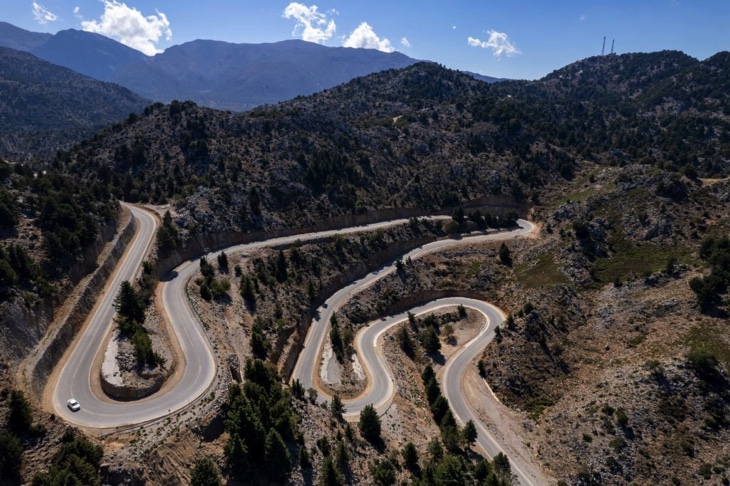
14. Is parking in Crete easy?
Parking in Crete can be challenging, especially in city centers with limited spaces, narrow streets, and high vehicle numbers during peak seasons. Heraklion has the most difficulty, with recommended spots near the port and private lots in the old city. In Chania, Talos Square and public lots provide options, while Rethymno offers economical parking in the marina area. To improve chances, arrive early, consider parking on the outskirts, or use parking apps. City parking usually costs 1-4 € ($1.06-4.25, £0.87-3.48) per hour, with fines reaching up to 80 € ($84.97, £69.73) for violations.
15. Is Crete suitable for families traveling with young children?
Crete is highly suitable for families with young children, offering a safe environment, family-friendly infrastructure, and diverse activities. The island’s mild climate, safe beaches, and absence of dangerous wildlife make it ideal for young families. Many accommodations provide child-focused amenities like pools with lifeguards, baby-proofed rooms, and children’s menus. Car rentals offer child seats at no extra charge, and main roads are well-maintained. Families can enjoy shallow beaches, easy hiking trails, water parks, and interactive museums, making Crete a well-rounded destination for young children.
Wallpapers of Crete
Find the wallpapers of Random Shots of Crete including Loutro, Balos beach and Chania’s Open Market below.
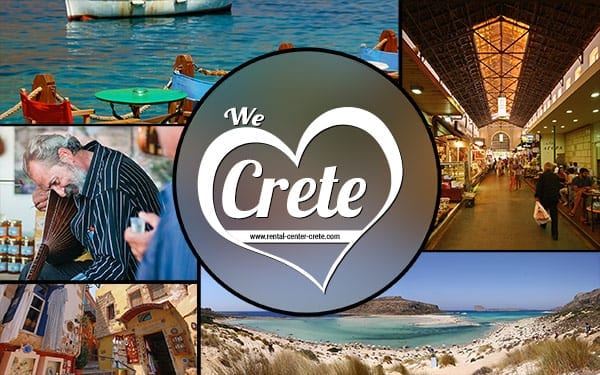
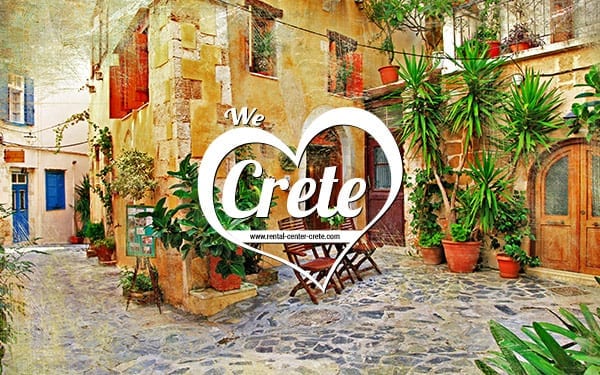
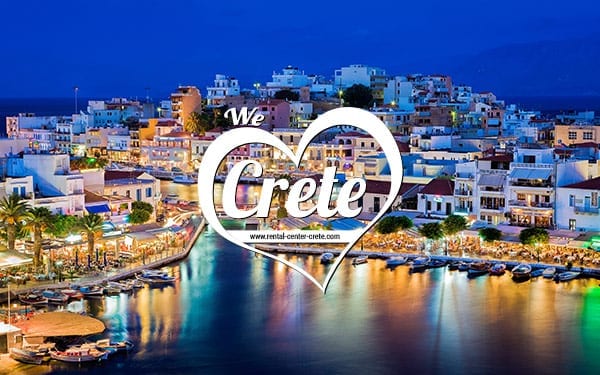
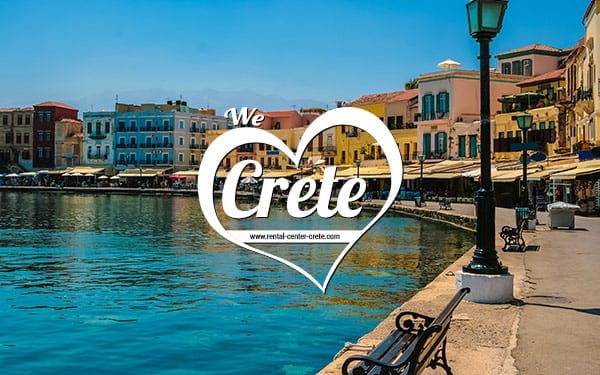
Last updated on June 11th, 2025












